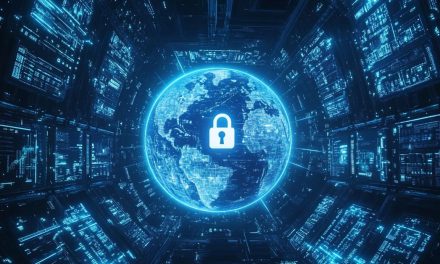The role of cybersecurity in digital well-being is to create a safe, predictable, and controlled online environment, which is the essential foundation for a positive and healthy relationship with technology.
As of September 5, 2025, we often think of “digital well-being” in terms of managing screen time or curating a positive social media feed. However, the true bedrock of our well-being online is the feeling of safety. For users here in Rawalpindi and across Pakistan, practicing good cybersecurity is not just about protecting data; it’s about protecting our peace of mind.
1. Creating a Sense of Safety and Security
At its most basic level, digital well-being requires a sense of safety. It’s impossible to feel good online if you are constantly worried about your accounts being hacked or your devices being infected.
- The Threat to Well-Being: A constant state of low-level anxiety about online threats can be mentally exhausting. The fear of a compromised bank account or a hacked social media profile creates a background hum of stress in our digital lives.
- The Role of Cybersecurity: By taking proactive cybersecurity measures, we can significantly reduce this anxiety. Simple habits like using a password manager and enabling Multi-Factor Authentication (MFA) create a tangible sense of security. Knowing your accounts are well-defended allows you to engage with the online world more confidently and with less fear.
2. Reducing the Anxiety of Identity Theft
Identity theft is one of the most stressful and violating experiences a person can have in the digital age.
- The Threat to Well-Being: The fear of having your identity stolen can be a major source of anxiety. The actual experience of dealing with the aftermath of identity theft—the endless phone calls to banks, the damaged credit score, the feeling of violation—can have a severe and lasting impact on a person’s mental health.
- The Role of Cybersecurity: Good cybersecurity habits are the frontline defense against identity theft. By learning to spot phishing scams, being cautious about sharing personal information (like your CNIC) online, and securing your accounts, you are actively protecting yourself from this deeply personal and stressful crime.
3. Combating Harassment and Cyberbullying
Digital well-being is impossible in an environment of harassment. Cybersecurity tools and practices are essential for creating a safe personal space online.
- The Threat to Well-Being: Online harassment and cyberbullying can have a devastating impact on mental health, leading to anxiety, depression, and social isolation. This is a particularly acute problem for young people in Pakistan.
- The Role of Cybersecurity: While not a complete solution, cybersecurity practices provide the essential tools for self-defense. This includes:
- Using Privacy Settings: Teaching users how to make their social media accounts private to control who can see their content and contact them.
- Blocking and Reporting: Empowering users with the knowledge of how to block malicious accounts and report harassing behavior to the platform.
- Securing Accounts: Preventing account takeovers, which are often a precursor to a harassment campaign where the attacker impersonates the victim.
4. Empowering Users with Control
A key component of well-being is a sense of agency and control over one’s own life. In the digital world, cybersecurity provides this control.
- The Threat to Well-Being: A feeling of powerlessness in the face of massive tech companies and unseen hackers can lead to digital fatalism (“there’s nothing I can do, so why bother?”).
- The Role of Cybersecurity: Cybersecurity education is empowering. When a person learns how to use a VPN to protect their browsing history, how to manage their app permissions to stop data collection, or how to spot a scam, they are no longer a passive victim. They become an active, empowered agent in control of their own digital life. This sense of control is fundamental to a healthy digital well-being.





